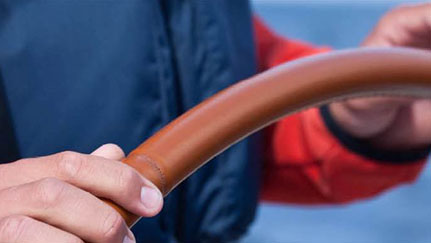
If you are one of the more than 87 million U.S. adults who participates in recreational boating each year,¹ you know a day on the water is enjoyable as long as proper safety precautions are followed.
As the owner/operator of your watercraft, the safety of every person on your boat and those on the water around you is your top priority. Unsafe or irresponsible operation of your boat may result in damage to property and/or injuries to people. To help you minimize the risks to people and property, Nationwide Private Client Risk Solutions offers the following simple steps and tips when it comes to boating safety, transportation and storage:
Preparation before leaving the dock
- Take a boating course: Eighty percent of fatal accidents involve operators who have not received boating safety instructions.2 Although some states require boating safety courses, regardless of your state’s requirement, it is important to be educated and prepared by learning boating safety rules and operations. You can find boating safety classes in most local communities and online.
- Perform preventative maintenance: If you’re taking the boat out of winter storage for the first time, do some preventive maintenance before you launch. Inspect fuel systems for leaks and damage. Check belts, cables, electrical connections and fluid levels. Inspect propellers for dings, pitting, cracks and distortion. If you are not expert in the maintenance of your watercraft, consider engaging a knowledgeable professional.
- Consider a free vessel safety check: The U.S. Coast Guard offers complimentary boat examinations that provide helpful boating tips and recommendations. Follow up on any recommendations or maintenance issues that are identified.
Safety the day of your water excursion
- Rules on the water: Follow all federal, state, and local laws and regulations when it comes to operating your watercraft.
- Develop a float plan: Always be sure to inform someone of your float plan, including where you are going and how long you are going to be gone. Also include name, address and phone number of all passengers, boat type and registration information
- Check the weather: Check local television and online weather sites, including sea/lake reports and marine forecasts, before departing. If you notice rapid changes in weather conditions like wind, sudden drops in temperature or dark clouds, don’t take the risk and get off the water.
- Develop a pre-departure checklist: Be prepared for anything. Develop and follow a pre-departure plan that includes a safety and maintenance checklist to ensure you are following proper boating safety rules and precautions and aren’t overlooking anything important.
- Comply with your boat’s capacity restriction: Overloading with passengers or equipment can unbalance your craft.
- Designate a secondary operator: Be sure more than one person can handle and operate the boat. This person should be familiarized with the boat’s handling, the location of personal flotation devices and fire extinguishers and general boating safety.
- Have U.S. Coast Guard approved life jackets and use them properly: Most drownings are the result of boaters not wearing life jackets. Make sure everyone on board has a properly fitted life jacket and wears it.
- Use common sense: Operate the boat at a safe speed, stay alert and be respectful of buoys and other navigational aids.
- Avoid alcohol: The effects of alcohol are increased by the sun and wind, and the probability of being involved in an accident doubles when alcohol is involved.3 Avoid alcohol use while boating.
- Learn to swim: If your vessel capsizes or you or others end up in the water, don’t rely solely on your life jacket. Knowing how to swim is vital in a worst-case scenario if the life jacket does not automatically inflate or if rescuers are slow to reach you.
Watercraft transportation and storage tips
- Look for and use certified trailers: The National Marine Manufacturer Association (NMMA) operates a trailer certification program to help boat trailer manufacturers comply with established industry standards and federal safety regulations.
- Determine the towing capacity of your car, truck or SUV.
- Know the “dry weight” of your boat listed in your manual. Then add a few hundred pounds to account for fuel and gear.
- Consult your state laws regarding weight and beam requirements when trailering.
- Store your boat properly: Another important consideration is storage options when owning a boat.
- For owners of larger boats, buying or renting a slip at a marina is the best way to go. The better marinas offer electricity, water, telephone, internet and television at the dock.
- Another option for storage is dry dock or rack storage. A typical rack storage facility keeps your boat in trailer-like cradle in a covered shed, retrieving it by forklift when you want to launch your boat.
- If you have a large garage, you may also consider storing smaller boats at home to allow for spontaneous trips to different bodies of water.
If you have any questions, please contact your agent or Nationwide Private Client Risk Solutions professional. For more information on how you can help prevent losses, visit nationwide.com/solutionseries.
We offer this information to assist you in making decisions that can help mitigate your risk. While we cannot address every possible scenario or guarantee these tips will work for you, our goal is to support your efforts to protect yourself and your family.
[2] blog.nationwide.com/5-tips-safe-boating/
[3] discoverboating.com/beginner/safety/tips.aspx
Sources:discoverboating.com ,nationwide.com ,usboating.com